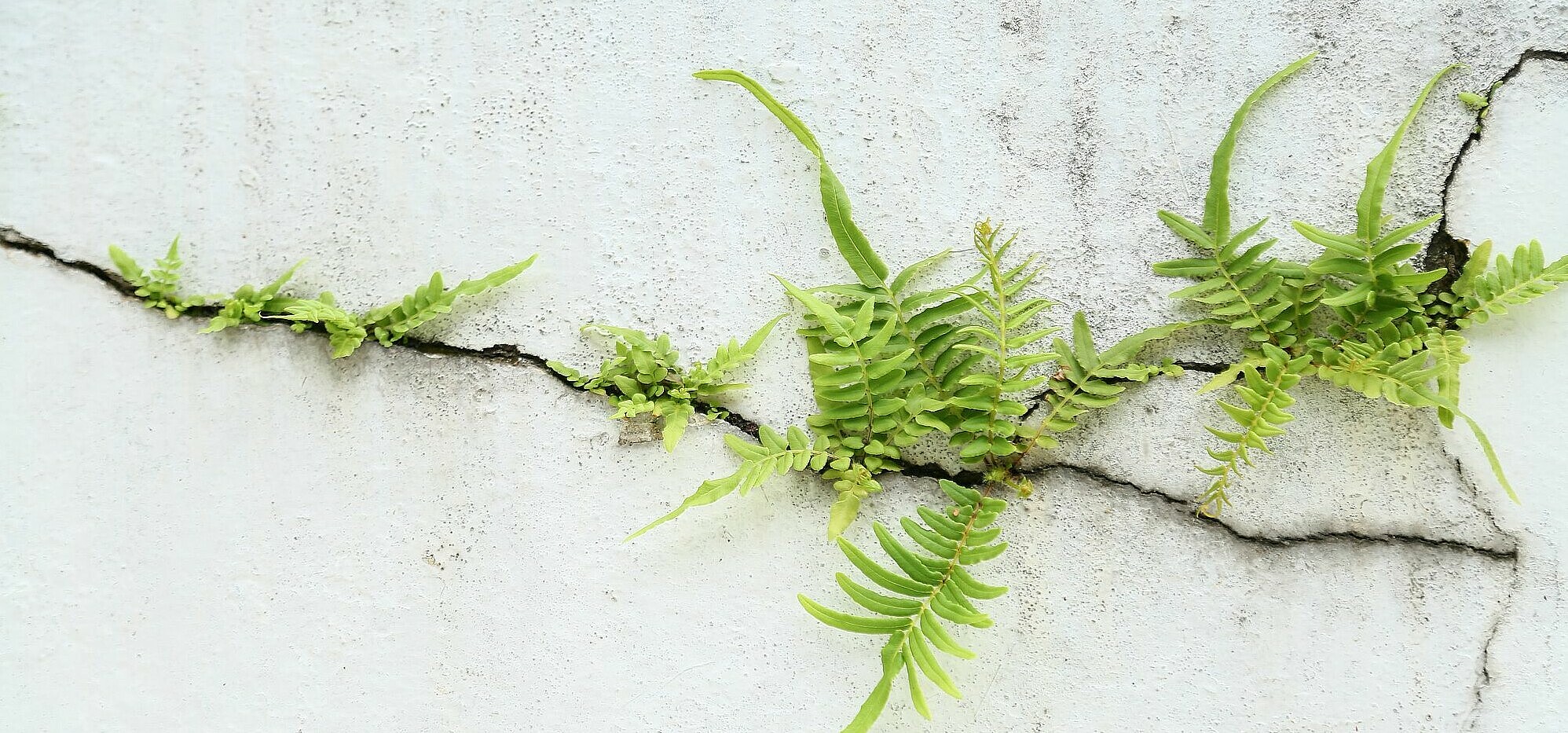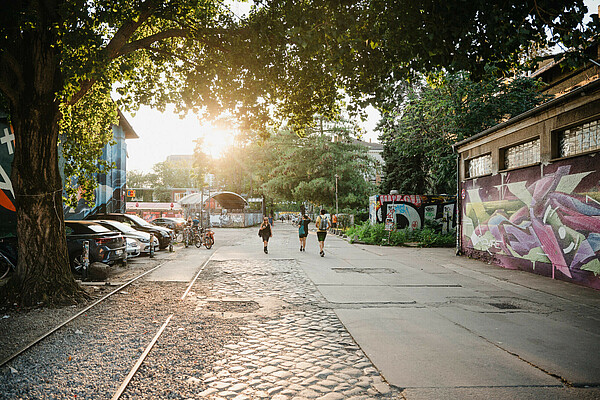Things that grow
Nature in Berlin
It’s too bad the tree known affectionately as “die Dicke Marie” (“the chubby Marie”) can’t talk. Just imagine all the things she could tell us about Berlin
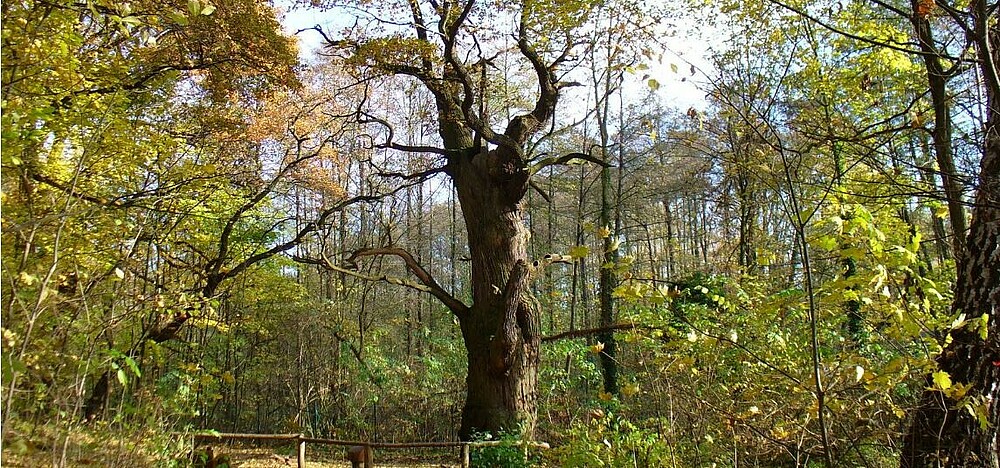
Strictly speaking, Berlin didn’t even exist yet in 1107, back when the tiny oak tree first saw the light of day. Over 900 years ago, near a bay called the Große Malche in a lake known as the Tegeler See, the delicate seed germinated, growing bigger and stronger each year. A couple of centuries later, she was given her nickname by the brothers Alexander and Wilhelm von Humboldt. Today, our Dicke Marie is believed to be Berlin’s oldest tree. It’s quite an honor, considering that roughly 13% of the city’s metropolitan area – that’s almost 12,000 hectares – is made up of public green spaces. These include parks, playgrounds, allotments, cemeteries, street foliage as well as roughly 438,000 street trees and countless park trees. Responsibility for the care and maintenance of the city’s green spaces falls mostly to the various departments of each Berlin district.

Green Berlin
Other institutions, such as Grün Berlin GmbH (Green Berlin), also take on special responsibilities. This state-owned group of companies is responsible for the development, implementation and operation of open-space projects and parks in the capital. From the Berlin Wall Memorial and the Kulturforum to the Park am Gleisdreieck and the 2017 International Garden Exhibition – they cover a wide range of activities. Berlin thus features a large number of green, cultural and recreational spaces that offer visitors plenty of spots for a quiet chat, peaceful refuge or a day with friends and family in one of the city’s unique parks. Nature is everywhere in the city.

Sustainable mobilty
Berlin’s public transport authority, the BVG, has set itself the admirable goal of using only electric busses on select routes through the city. The first route to go electric was Line 204 between Zoo and Südkreuz train stations. After some initial problems, the busses are now running more reliably. The BVG recently announced it would be acquiring a total of 30 more such busses by 2019. The busses currently in use – that is, their batteries – are charged at their final destination using an inductive charging system. “Electromagnetic induction” is the magic word, and many of us are familiar with this technology from things like the electric toothbrushes we have at home. The batteries are charged when the bus drives on to the charging panel at the service area. The procedure was developed by Primove, the electromobility department at Bombardier. The Solaris Urbino electric busses currently in use are as quiet as a modern car and operate on a completely exhaust-free basis. The BVG is also focusing on using 100% green electricity so that it can truly claim to be running an emissions-free operation.
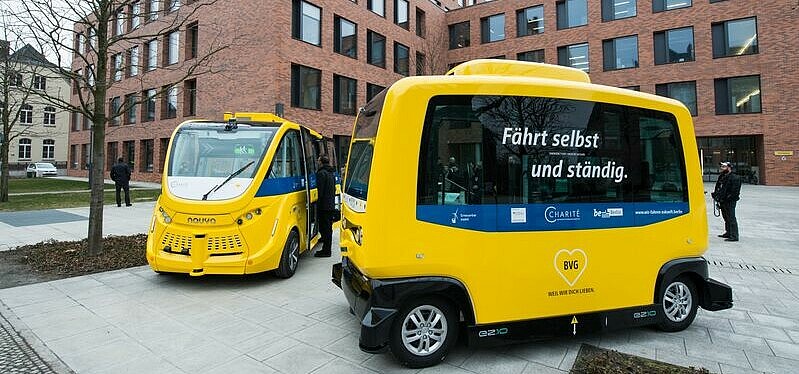
Two electrically powered autonomous minibuses are running on the Charité Campus in Berlin-Mitte since March 26, 2018. They transport employees, patients and visitors of the famous university hospital. Two more electrically powered autonomous minibuses will go in operation on the Virchow Campus in Berlin-Wedding in the coming weeks. The project is run by the Berlin transport company BVG, the Charité hospital and the state government of Berlin and is financed by Germany’s Federal Environmental Ministry. The aim is to research the technical challenges of implementation, acceptance among users and opportunities for public transportation.
Concrete is nature?
It’s not possible to say exactly how many tons of concrete there are in Berlin. According to the Federal Office of Statistics, concrete buildings cover approximately 40% of the city surface. Add to that another 15% for transport routes. But Berlin is by no means a concrete jungle. And it should be noted that concrete in and of itself is nothing bad. In fact, concrete is a nature-based product. And it’s a sustainable one, too. Concrete is made of sand, water, gravel and cement – none of which is harmful to the environment, that is to say, none of which would prevent sustainability. In other words, in the broadest sense, concrete is a natural product.
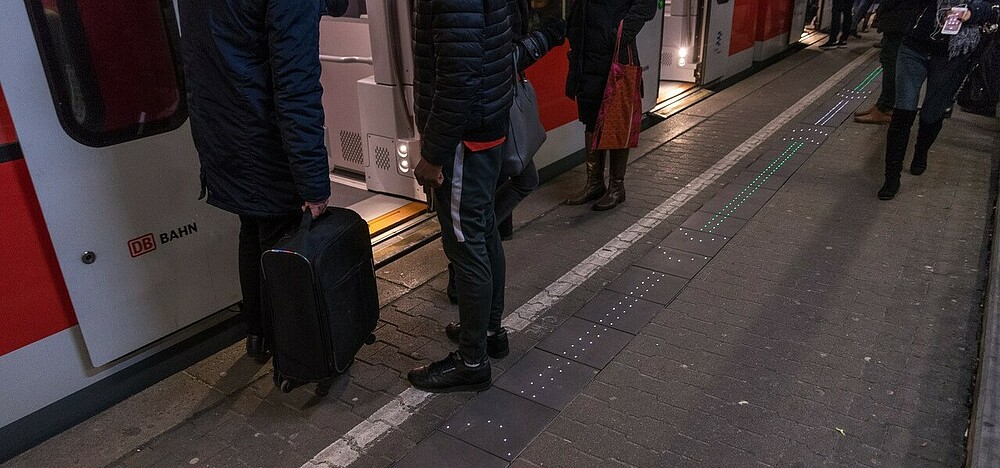
The fact that we can even make concrete shine bright has already been proven by a company called Siut, a spinoff of the Technische Universität Berlin that focuses on research into modern building materials. Siut develops pre-cast concrete parts in which fluorescent fibers are installed. Lamps of any color can be fitted into the concrete. The light fibers convey the light to the surface, thus enabling the creation of signposts, patterns and guidance systems. These can be used is a myriad of innovative ways, for example, to provide information at train stations and to guide travelers to their platforms. Germany’s rail operator Deutsche Bahn has recognized the potential of this technology and is currently working together with Siut. And it’s not just helpful tech, it’s aesthetically pleasing as well.

Text: Simone Fendler / originally published in Berlin to go 01/2018
Header image: iStock.com/curraheeshutter

